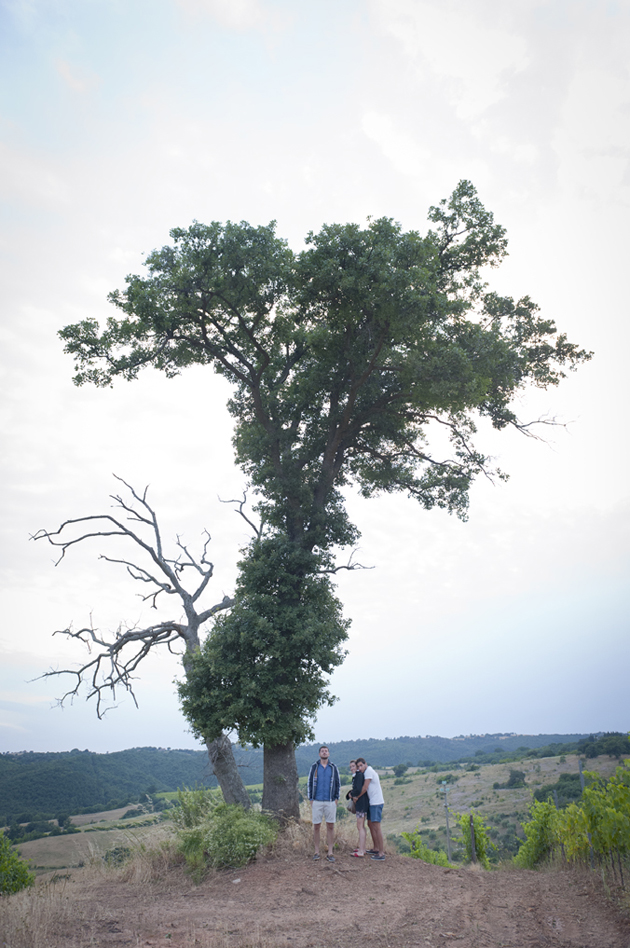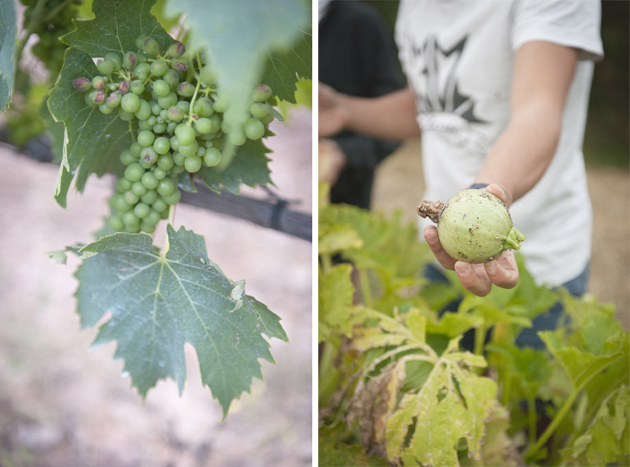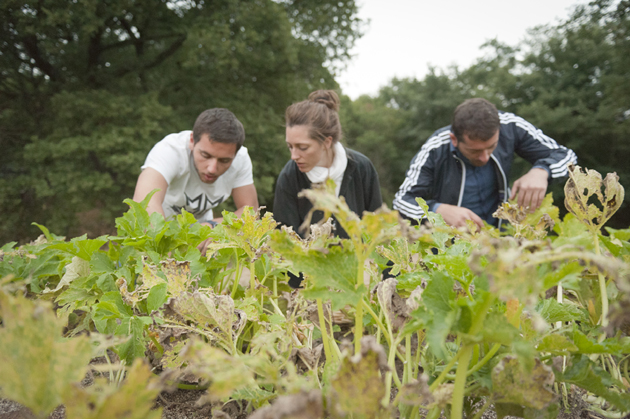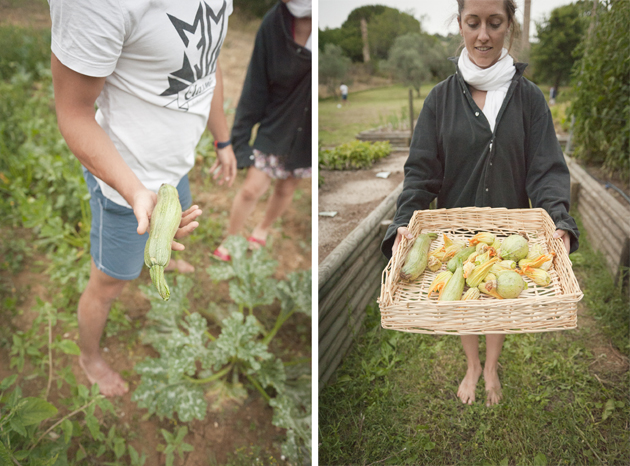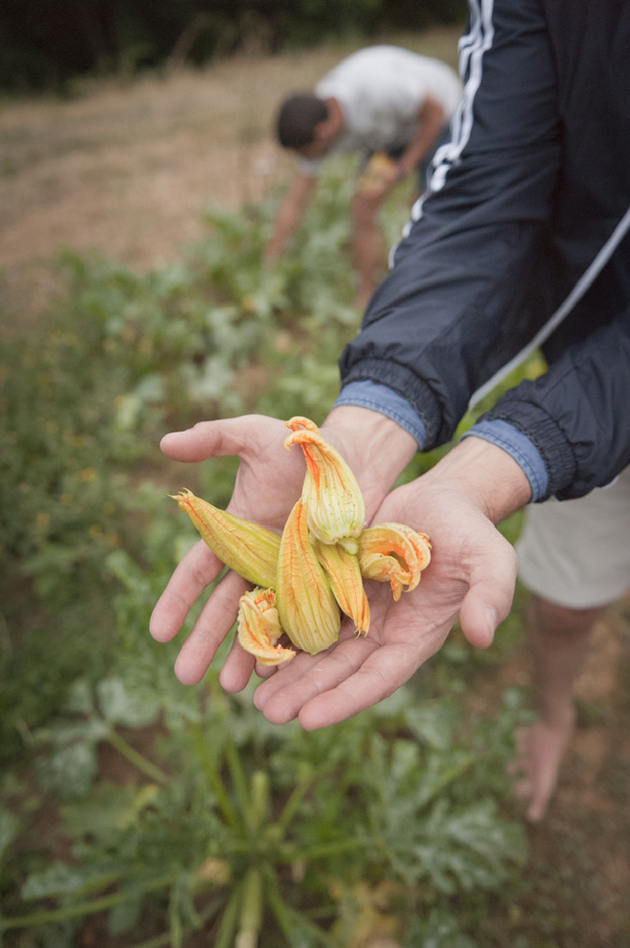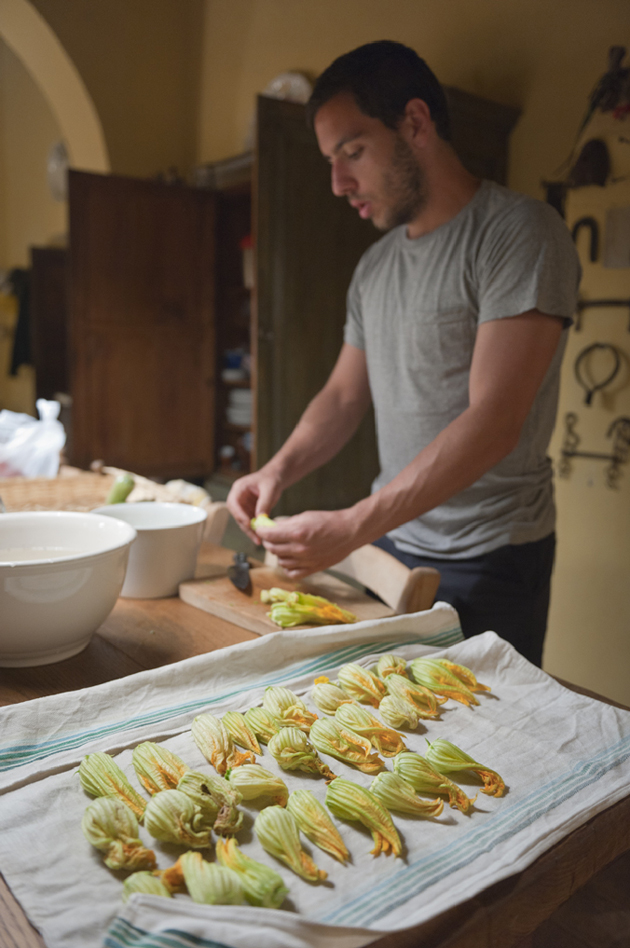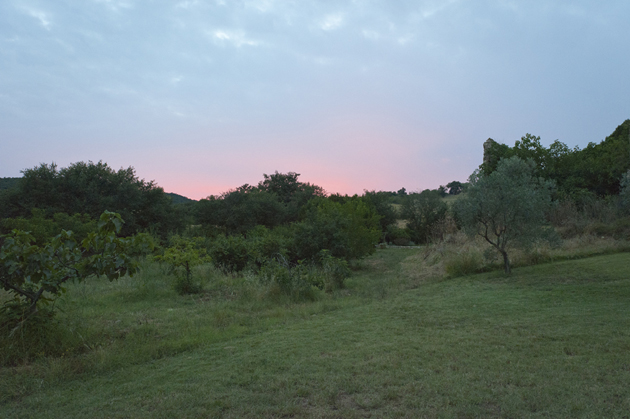A classy, easy and sweet moment with one of the things I love the most on earth: milkshake. Let’s start this day with a cherry on top.
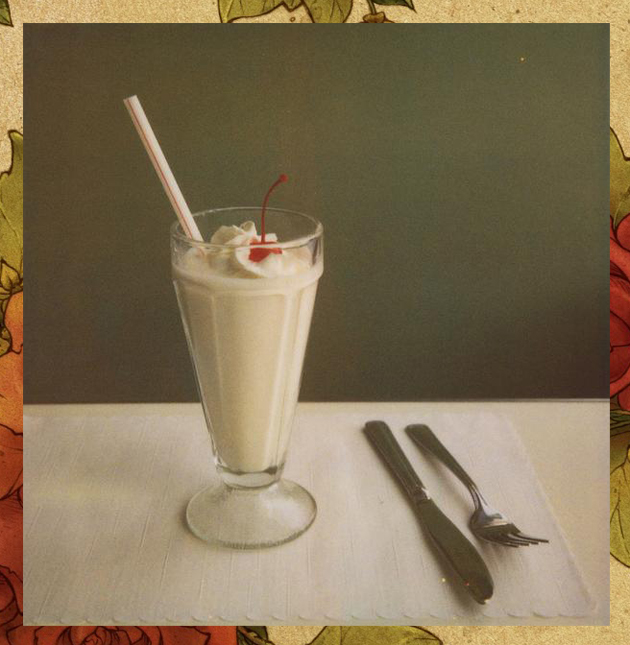
A classy, easy and sweet moment with one of the things I love the most on earth: milkshake. Let’s start this day with a cherry on top.

Even though our beloved cities are turning into steam baths and there is nothing we would rather do than soak in some sun while listening to the ocean somewhere far far away, we might still be stuck working behind our desks and, thus, find ourselves in the need to fill our weekends with something jolly to do. Well, even if this phrase makes you even more angry for being still trapped on your working spot, there might be something nice for you to do. Well, at least if you’re in London.
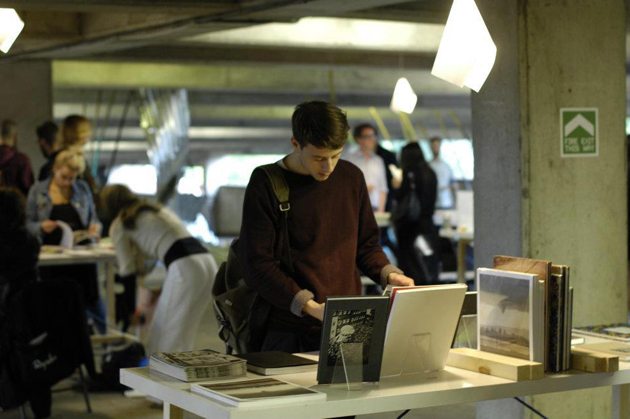
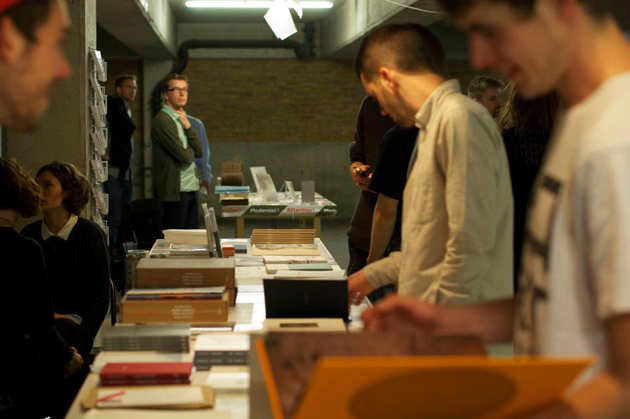
Copeland Book Market is an art publishing fair, which inaugurated its third edition yesterday. For four days, a curated group of book publishers, ranging from the established editors producing high-end monographs to small independent groups making zines and low edition artist books, will present their work and projects. Additionally, the project has set itself the mission of presenting publishers and works that are usually under-represented in London, hosting an International Table with projects developed by publishers who were not able to attend the event. Hence, among the participants you can find established publishers like Book Works, Four Corner Books, Gottlund Verlag or Morel Books, standing next to small and fairly unknown publishers, in an eclectic mix of products and ideas.
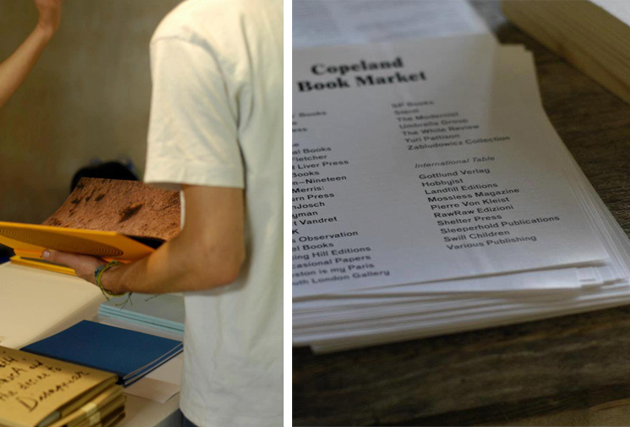
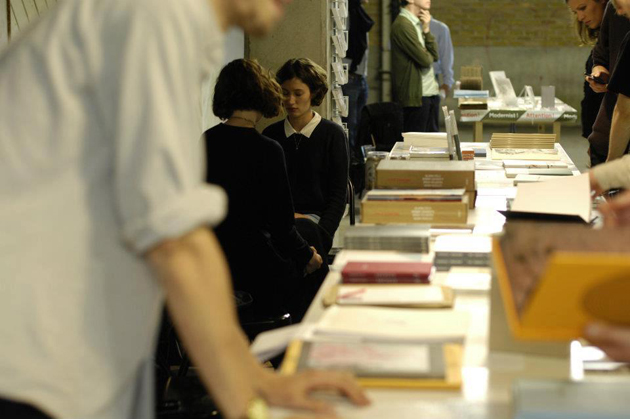
The event is tipped of with a series of performances, lectures and talks, held in a café, especially designed for this year’s edition by Rob Chavasse and Tom Saunderson. Named Central Café, it will be situated at the heart of the market as a “site for recording invited conversations and sound pieces, introducing a live performative element and animating the ideas exchanged in a market environment”. Even though spending another weekend in the city might not be your dream, if you do manage to check out Copeland Book Market, you might actually find a nice book to read when you finally reach your summer destination.
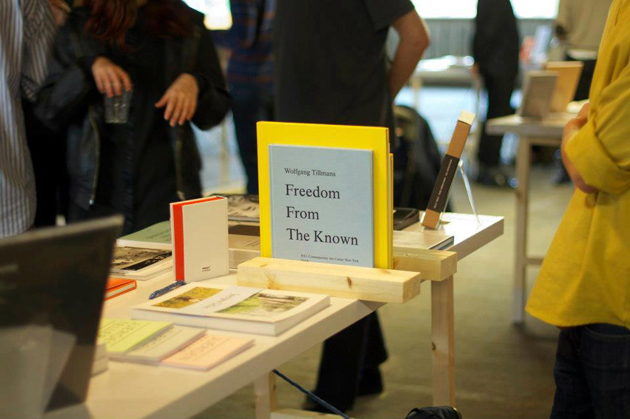
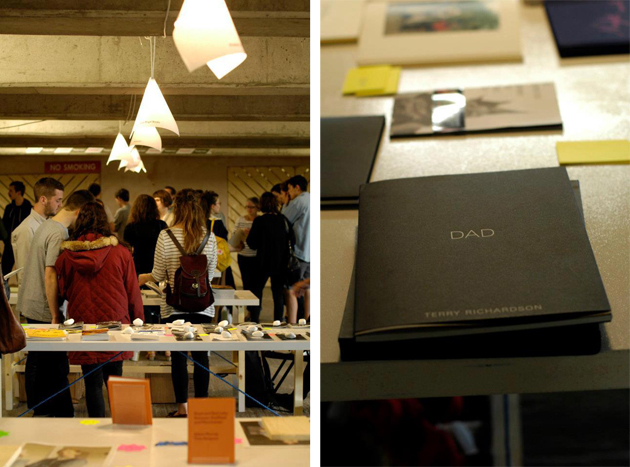
In the early 2000, Dutch designer Piet Hein Eek gained international recognition with his Scrapwood furniture collection, a set of cupboards, tables and armchairs crafted through a creative re-use of reclaimed wood. A genuine reaction to the pervading minimalism that had affected design during the 90s, his homemade style celebrated the beauty of old materials and the aesthetic dignity of no-waste culture.
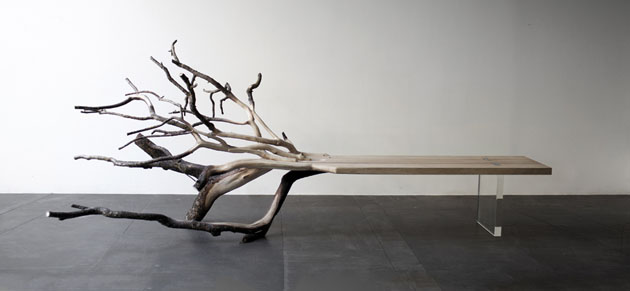
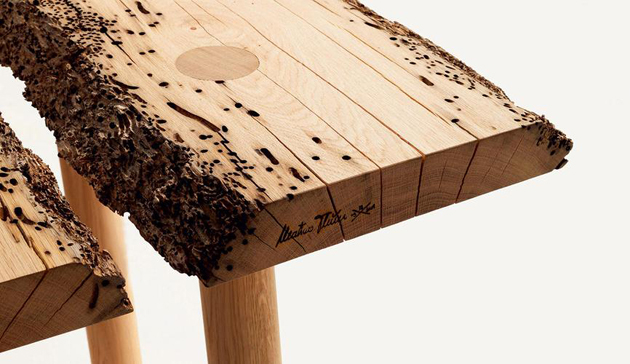
Nevertheless, his glamourification of imperfection went one step ahead the mainstream bricoleur attitude seen before. Instead of assembling miscellaneous junk otherwise destined for the dump, Hein Eek succeeded to ennoble his furniture through a distinguishing feature, an artificial fossilization process under a thick layer of synthetic resin.
Ten years later, designers demonstrate to be more and more passionate about old wood and its potential applications. Riva1920, an Italian manufacturer devoted to massive wood processing, launched two years ago the “Briccole” program, a design competition inviting to refunctionalize the wooden posts that drive boats through the Venetian lagoon.
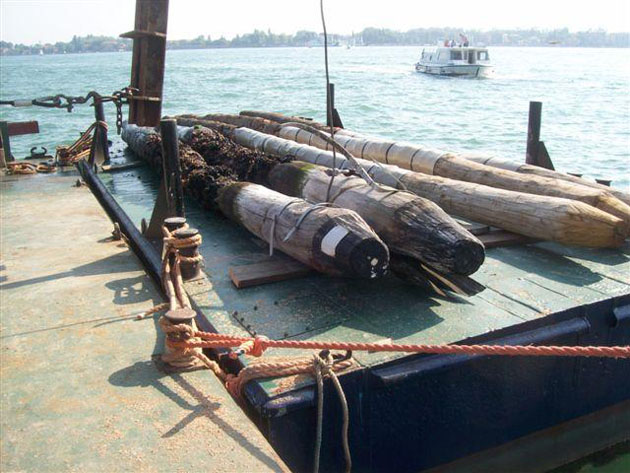
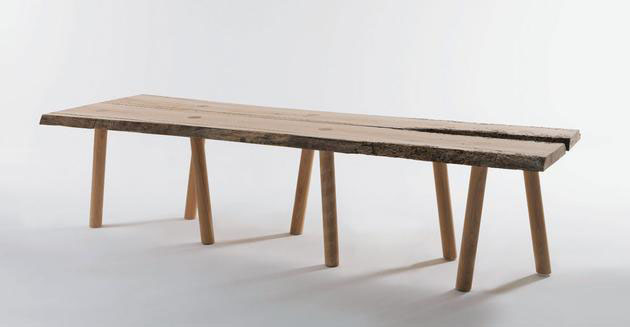
Among the 18 designers who joined the contest, Matteo Thun’s table is probably the most accomplished revamping attempt. Its tabletop, made from Briccole slices, is meant to appraise every flaw that comes from the corrosion of salty water, while brand new legs exalt the contrast between old and new wood. One more time, the result is not inconsistent and, above all, it avoids its most insidious risk: being rustic.
Finally, an innovative old wood design example comes from the 2013 edition of Design Basel, where the French gallery Ymer&Malta presented “fallenTree”, a limited edition table celebrating the raw aesthetics of a tree as a piece of art. Half table and half branch, this piece is not only a sophisticated example of contemporary cabinetmaking, with no rift between geometric and organic forms. Rather, the branch integration represents the very best achievement of the raw aesthetics: the most sophisticated form of design is to all appearances the most natural one.
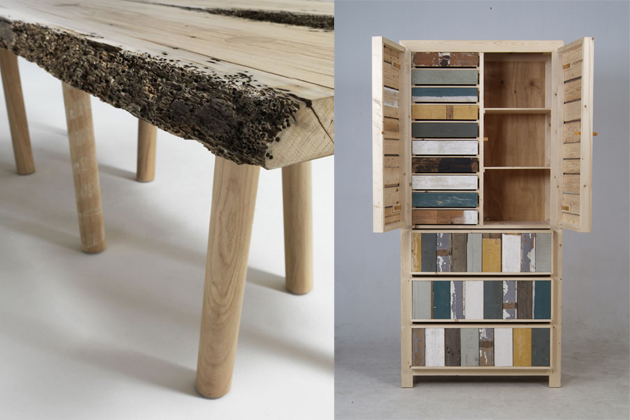
Istituto Europeo di Design, more commonly known as IED, is a fashion and design school that has been in business since the first campus opened in Milan, 1966. With a total of eleven locations in Italy, Spain and Brazil, IED works as an international network, offering short courses, three-year-programs, masters as well as one-year-diploma courses training young professionals. The school has since the beginning focused on the synergies between technology and experimentation. On top of the creativity aspect, the campuses concentrate also on the aspects of strategies and integrated communication, market issues and a new form of professionalism. The Blogazine spoke to Sara Azzone, director of IED Moda in Milan and Annaluisa Franco, coordinator and professor at IED in Florence, to find out more about a network that keeps on growing internationally.
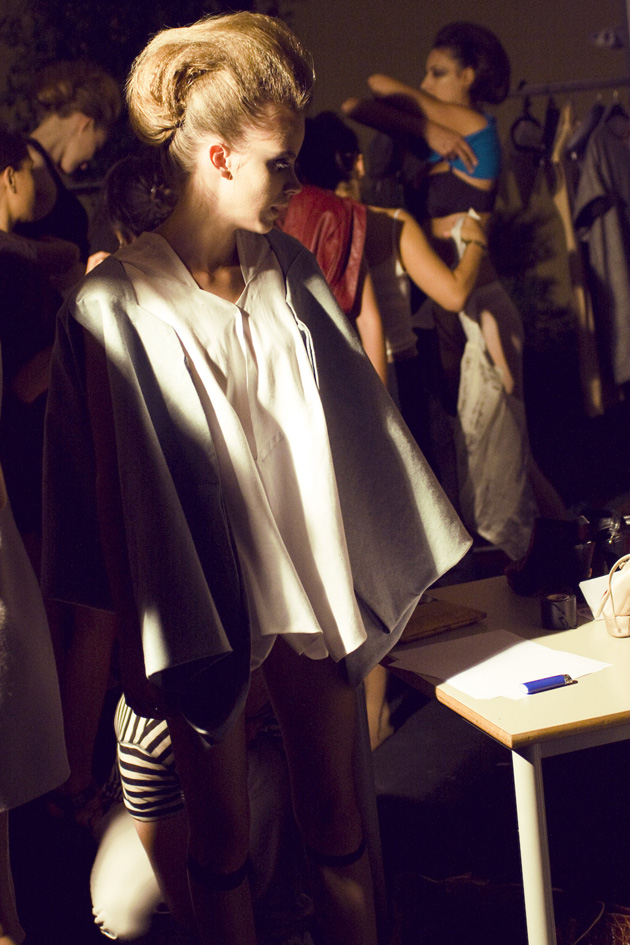
“It might sound banal, but we must rely upon the past to make the future. One great lesson of Italian fashion is to base creativity upon functionality, as a reason for the beauty of a garment. I do think this is of crucial importance to move forward to the next design paradigm and overcome the current crisis”, says Sara Azzone when we start talking about Italian fashion, the school’s heritage and the concept of Made in Italy. Continuing to speak about Milan as a student city she says: “For both Italian and foreign students, Milan is one of the few places in Italy offering an international and complete perspective on the world of design. This means two things: as for business, collaborations with renowned companies, multifaceted job opportunities and contacts with a myriad of people who belong to this world; as for fashion design, the opportunity to have a daily contact with fashion along with a real perception of what it is, in order to use it as a tool for personal and professional growth.”
Annaluisa Franco continues: “IED is not ‘just’ a fashion, design, visual arts or management school. The co-existence of these departments truly creates a community of fresh-minded people that learn a transversal approach to the current job market and have multiple skills.” As for what Florence brings to the table she replies: “IED chose Florence mainly for the accessibility that Florence and Tuscany offer to the design fields. Many of the best-known Italian companies worldwide produce, design and sell their goods in Tuscany first. This is particularly true for fashion and high-level design brands. The connection with the region, with the know-how and high quality of artisanal works is strong. It’s a dynamic situation that brings great benefits to the students. Not only are they immersed in the cultural heart of Italian Renaissance, though rich with inspiration, but they are also close to a lot of small, medium and large companies.”
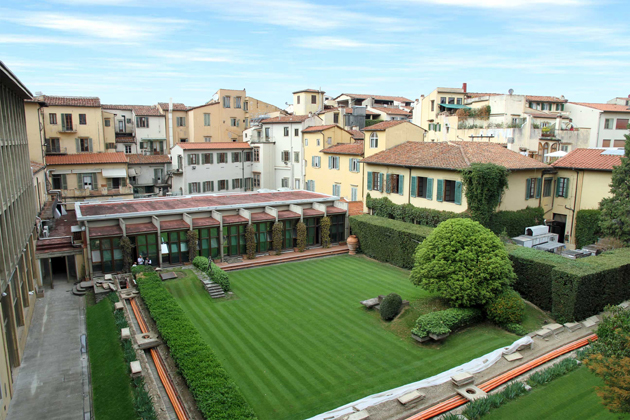
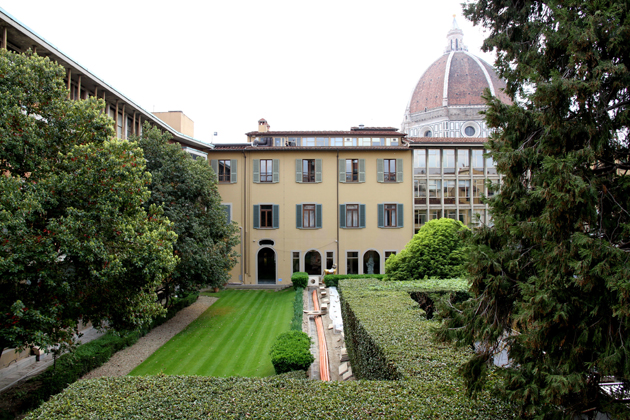
Both Franco and Azzone mention a strong relation between the different IED campuses but point out that each IED city maintains its identity, strongly connected to the culture and society of the country. A student won’t find the same undergraduate or master program in more than one location, however, the benefits of being an international network facilitates exchanges between campuses. All the IED venues also work with a variety of teachers coming straight from the professional world. “It’s fundamental” says Annaluisa Franco. The school uses an experiential, applicative and hands-on didactic approach, in which teachers who simultaneously works for companies within the industry become important. The students are given an every-day-view of the working world, where the true challenges, as well as solutions, can be discussed. “Professionals may take teaching classes to improve their in-class presence but if you’ve never worked in the professional world, you will end up having nothing to teach about.”
Sara Azzone agrees. “What makes the difference, of being a ‘good’ fashion school, is the capacity to prepare your students to face the demands of this world by training them as true professionals and giving them the opportunity to be constantly in touch with people working in contemporary fashion.”
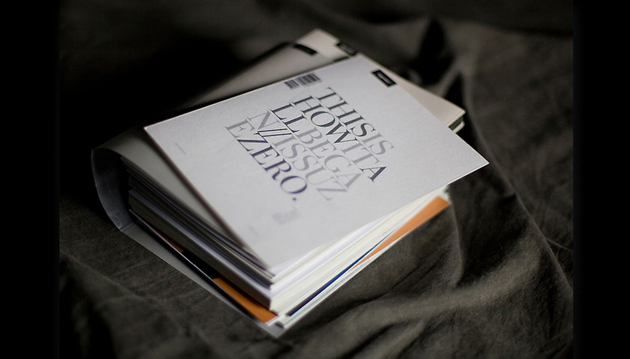
“At the risk of sounding blasé – the world is not what it used to be”, comments Franco when the discussion goes towards the difficulties of the business of today and the changes of an industry in constant progress. “What attracts people in fashion has changed, often these changes are still overlooked and non-defined. To only offer ‘fashion design’ when the industry is looking for social media experts, CAD-CAM modeling know-how or eco-innovators doesn’t make sense. The jobs and figures in the industry are new and therefore we, on the educational side, have to create a structure for something that others don’t know how to ask for yet.”
During its almost 50 years of existence, Istituto Europeo di Design has built up a dynamic and interconnected system – effective and stimulating and a place where its students can create their first network of connections. So, what is the recipe for success in a business that only seem to become tougher? “Read, watch, listen, talk to people, absorb as much as you can – there is no other way to be successful. Do not be afraid to express yourself – and of course, work hard.”
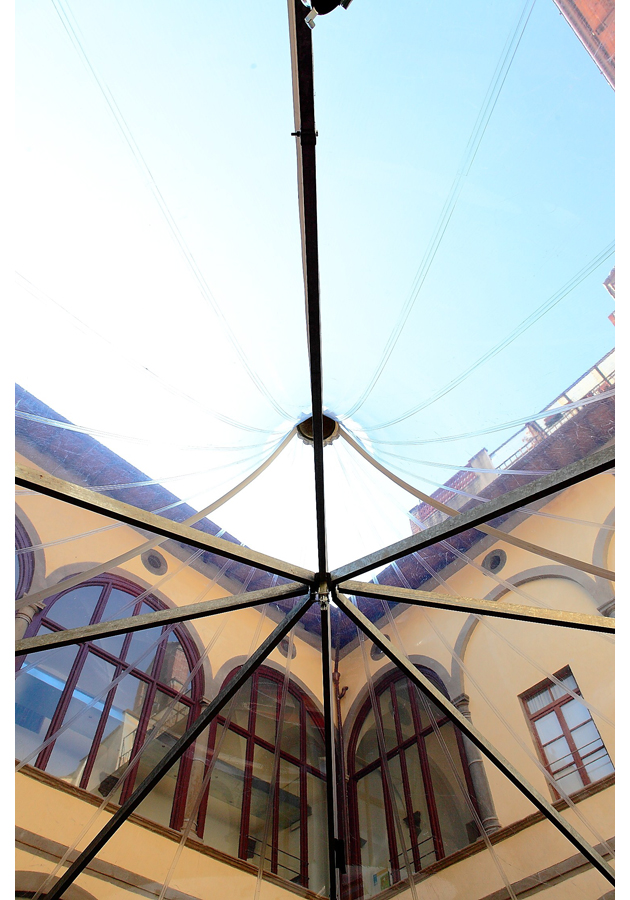
How much space does one person need to live in? Since forever architects, designers, builders and engineers have asked themselves the same questions, offering different practical solutions to the problem, while implicitly also posing questions about the nature of human existence within four walls of a structure we might call home. From the nomadic lifestyles embodied in a caravan, to tiny tree houses, the secret refugees of any child, from Le Corbusier’s “Cabanon” to Jean Prouvé’s “Maison Metropole”, these minimal spaces seem to embody an enigmatic quality of a solitary life in retreat, without giving up on the most basic comforts of modern life.
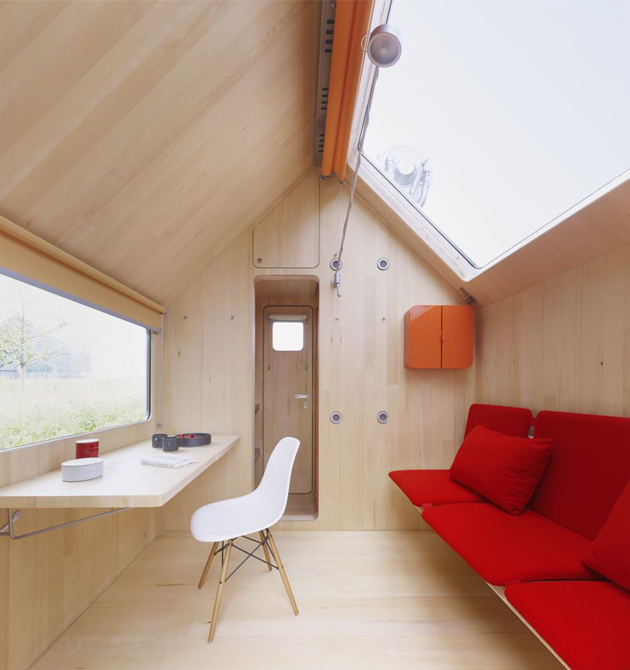
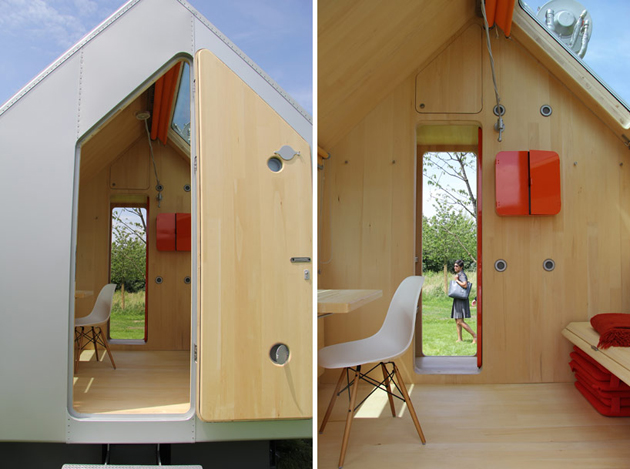
Wheather Renzo Piano had this idea in mind when he started drawing his minimal housing unit, is only an assumption, but it might as well be perfectly correct hearing the name he chose for the project. Diogene borrows its name from Diogenes of Sinope – a controversial Greek philosopher who lived in a jar – and was initially designed by Renzo Piano as a self-initiated project for a “voluntary place of retreat”. It was only after meeting Rolf Fehlbaum, the mastermind behind Vitra, in 2010 that Piano’s dreams about a tiny house, that he cherished since his student days, were finally turned into a real project.


Diogene eloquently continues a long-lasting architectural discussion on the idea of a minimalist house, by developing an ultimately independent unit, where both the water and power supplies are produced by the house itself. With a surface area of 2.5×3 meters when fully assembled, Diogene can be transported and placed anywhere, providing a retreat and a space for reflection, while also functioning as a reminder of what is truly essential in our living environment.
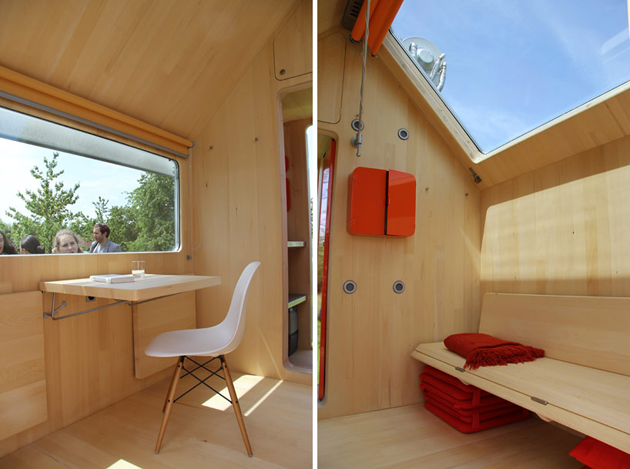
Today more than ever, we are used to speed up to increase the number of things to do in the shortest time possible, trying avoid stopping in the name of productivity. It seems that going faster – being always active, without resting – is an inestimable source of pride for people. The collective unconsciousness is clearly livened up by the efforts of maximizing performances. Maybe for achieving our goals we run into something very similar to self-mistreatment. Is it really worth it? Who knows? What is certain is that the over-activity is leading us to loose the ability to stare, to take a slow look and extend the observation, turning a glimpse into a close contemplation.
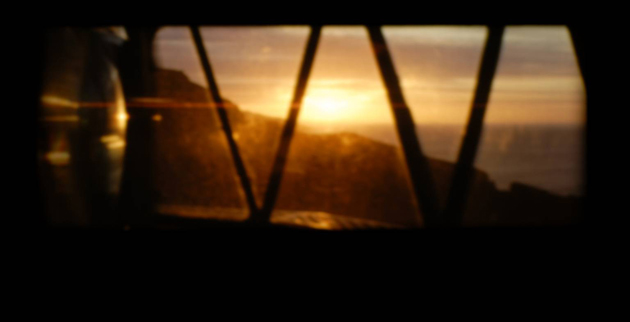
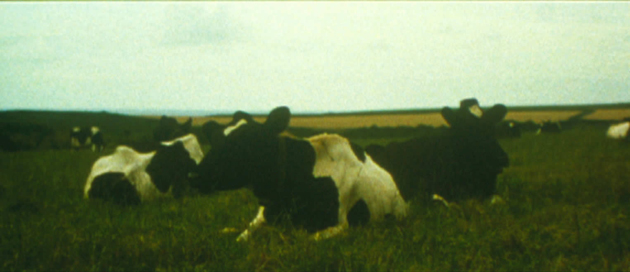
Among the contemporary artists who consider and reflect on the importance of stillness and contemplative immersion, Tacita Dean (b. 1965, Canterbury, England) – who works in a range of media, but primarily with video – is certainly one of the most effective ones. Member of the second wave of the Young British Artists, or YBAs, Dean is mostly recognized for her 16mm analogue films, shot and projected with anamorphic lens, which creates rectangular panels that enhance her meditative and penetrating works. From the forty-minute static shot across the restaurant interior of the Fernsehturm (2001), the iconic television tower that dominates Berlin, to the long narrative work Kodak (2006), where Dean showed us the manufacture of the film – providing a rare opportunity to see the machines fully illuminated, without the darkness needed to prevent exposure – using the same medium, just before it went out of production; from the documentary intimate portraits of artists such as Mario Merz and Merce Cunningham to the black and white restitution of Giorgio Morandi’s Bolognese studio in Still Life and Day for night (2009) for the exhibition arranged in Milan by the Trussardi Foundation in 2009; passing through the repertoire of natural landscapes and eclipses shot in real time as in The Green Ray (Il Raggio verde, 2001), the fruition of Tacita Dean’s work ‘imposes’ to slow down.
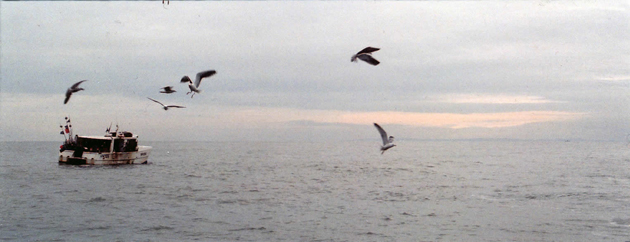

Her endless pauses on almost still bucolic overviews, atmospheric events, expanses of water and skylines work as a kind of training to get eyes more accustomed to calm and patience: slow and lengthened pedagogical exercises that help us to linger on details, appreciate the time expansion and repossess our contemplative aptitude, because on the contrary of mass belief, “not doing” is an active practice where new ways of thinking and creating actually lie.
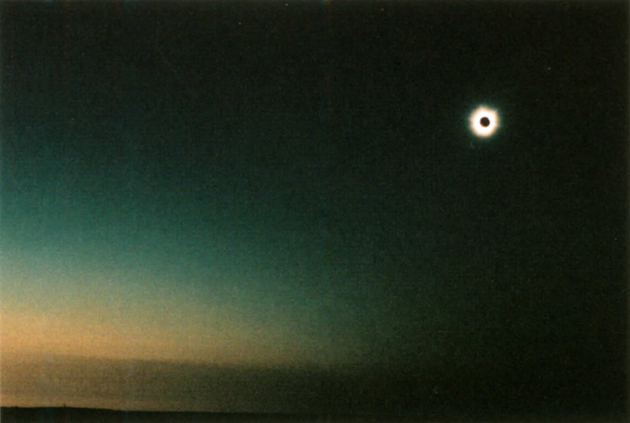
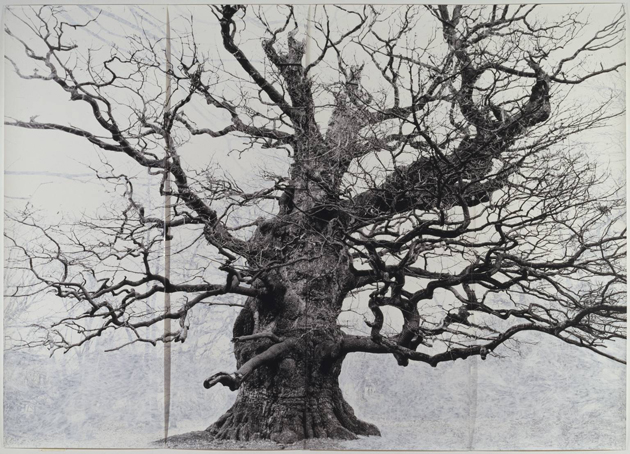
The scent of a rose is so deep and strong that it feeds me more than food. Lime, water and sugar is the right start for a warm day.
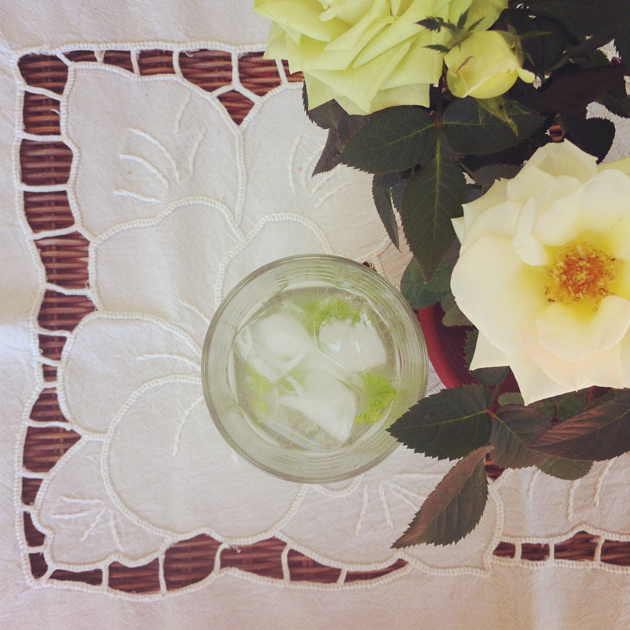
“Punk has had an incendiary influence on fashion.” Andrew Bolton, curator at The Costume Institute at The Metropolitan Museum of Art concludes it well, speaking about the exhibition PUNK: Chaos to Couture, currently showing at the MET.
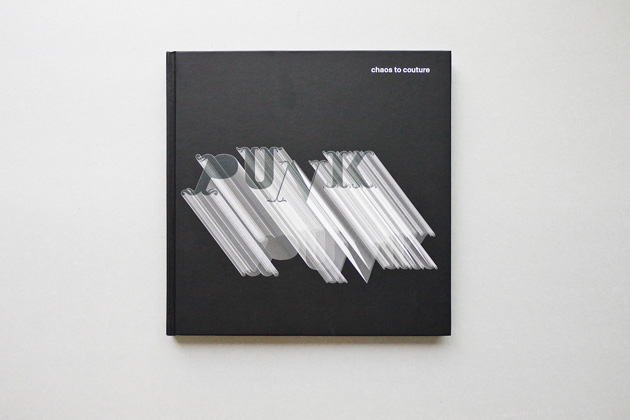
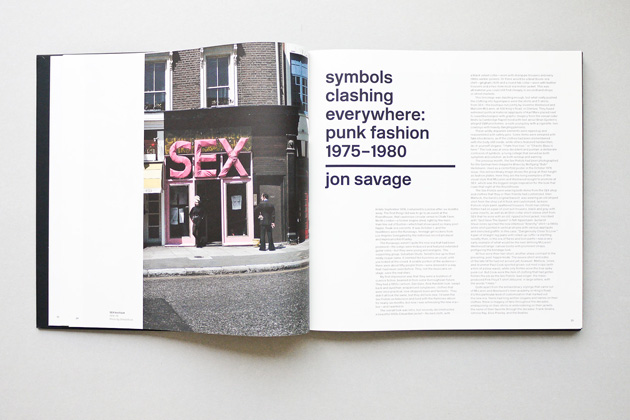
Today the editorial office received the beautiful book that on its 240 pages reproduces the expo in images and text. Together with the photographs from the exhibition, the book features a six page intro by Andrew Bolton and words written by personalities like John Lydon (maybe more known by his stage name Johnny Rotten), Richard Hell, Jon Savage and Vivienne Westwood. A punk archive, adding a bit of edge to our bookshelf.
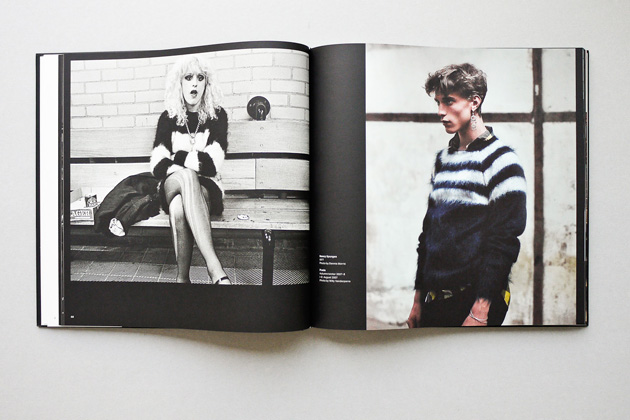
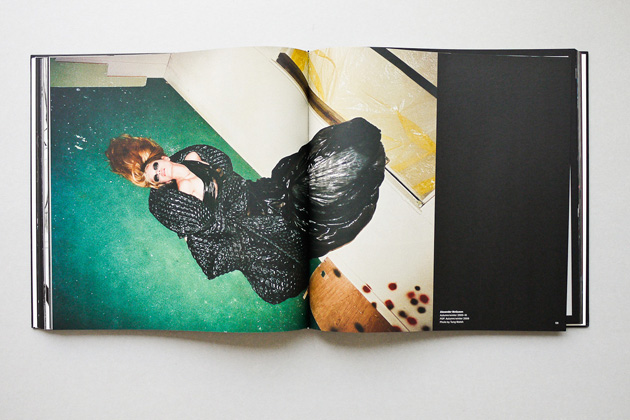
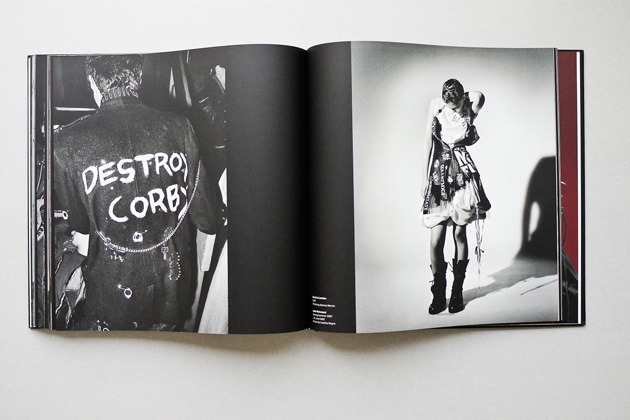
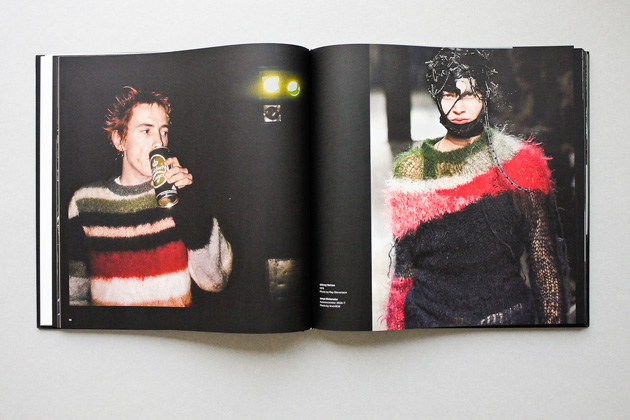
Not everyone uses Instagram for publishing photos of painted nails, animals decorated like Christmas trees or more or less funny parties with friends. Even if it’s mostly populated by people that use it just for fun, Instagram, sometimes, is successfull in the increasingly arduous challenge of making us think about what’s happening away from the safety of our homes, catching the eye for a good cause. Some months ago we casually ended up on the profile of Pachi Tamer (@cachafaz), an Argentinian creative director with a thick beard and a smiling face. In his free time he walks the streets of Austin, Texas – where he lives with his family -, Los Angeles, Medellìn and Mexico City, taking pictures of the homeless with his iPhone. His tecnique is simple and almost always winning: he approaches them, offers them a cigarette and lets them share their stories.
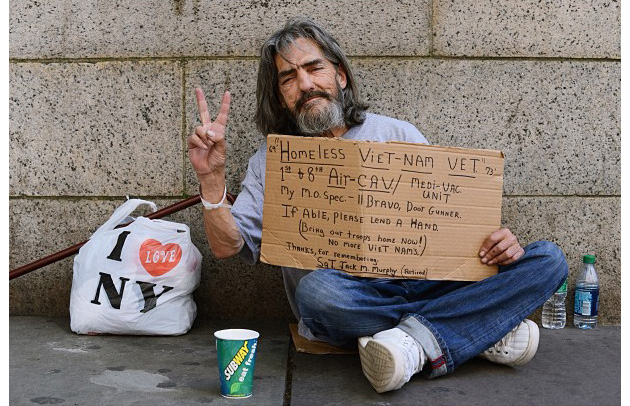

Like this, his 15K followers discovered the story of Jim, a German-descent homeless person, who has the dream of going at least once in his life to Oktoberfest. After approaching him, Pachi understood that his work could be used for a good cause: to raise money with the One Dollar Dream Project, as he named it, for making the homeless people’s dream come true. As the dream of Alexander, addicted to “basuco” – a drug produced from the waste of cocaine and used widely in the ghettos of South America –, who wanted to stop with the drug use. Nowadays he’s in rehab in Medellìn. Or the dream of Bob, who bought a bike with the money raised thanks to Paki’s project.
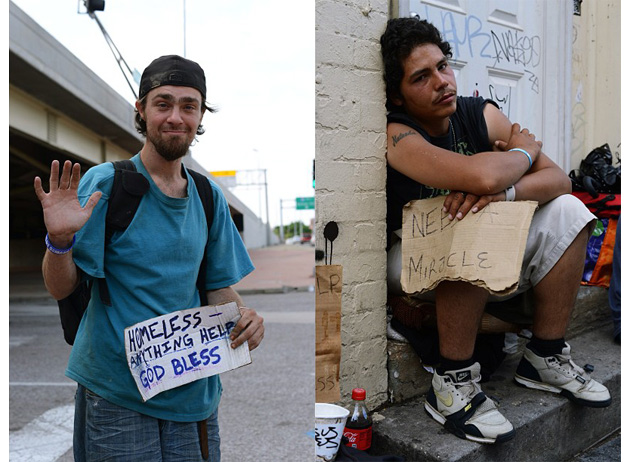
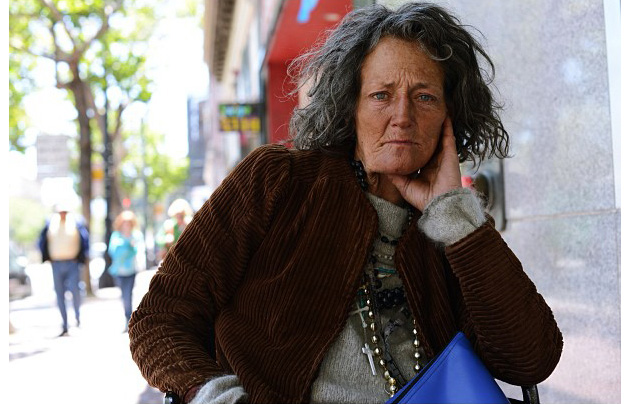
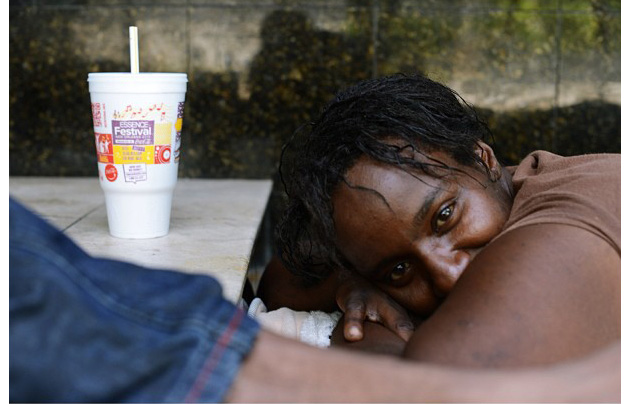
One of the lastest shared stories is the one of Jaret, that Pachi used for an experiment: he published a post in which he made followers believe that this young, astute-eyed homeless person took advantage of his confidence and stole his car. In the next post, Pachi unveiled the meaning of his experiment, answering to the people that accused poor Jaret of the act: “I lied to you guys. I’m sorry. Why did I do it? For two reasons. First of all, to those who thought you can’t trust people from the streets, I have to tell you that you’re wrong. Sometimes the people you know well are the ones that let you down. And second, never trust what people say about others. No matter how much you trust that person. Usually we get the wrong idea and judge others for something we hear from someone else”.
A lesson for everybody. And, if possible, a trip to knowing people and lives we would otherwise never know. A trip that may be better than any other trip we will ever do.
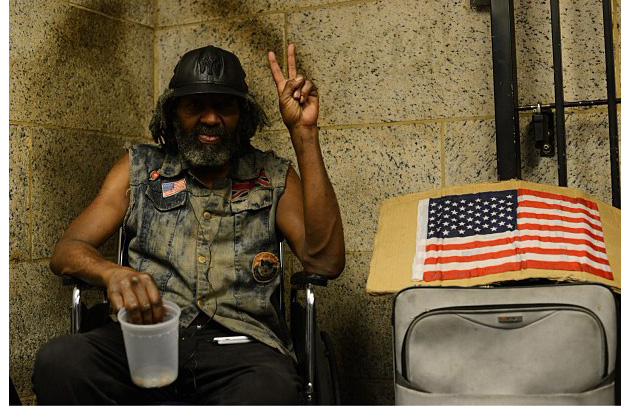
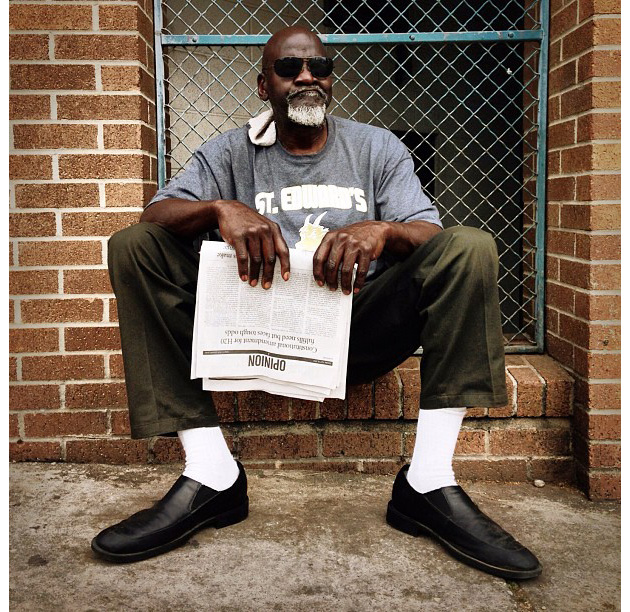
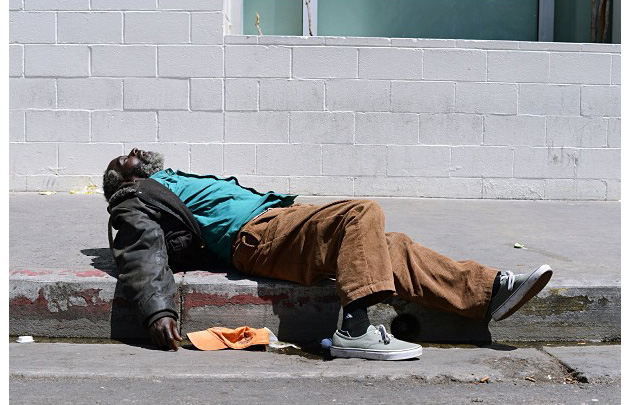
What happens when four food loving friends spend a weekend in a beautiful countryhouse? We went to Tuscany, a few steps from the beach of Porto Ercole, the wonderful sea of the Argentario, in an area rich with vineyards, local delicacies and wine. In the garden of the house hosting us, right behind the pool, big ripe zucchini and squash flowers, tomatoes, fresh mint and basil were waiting for us. Thus was born the idea of a fresh, fragrant and delicious pasta accompanied by excellent white wine; squash flowers, crisp and delicate, embellished by fresh mint. To add a hint of saltiness to accompany the local hand-made egg pasta, we used dry-cured ham sliced by hand. This delicious dish is to be enjoyed in the silence of the countryside, accompanied by exceptional wine, fresh at the right point, saline and fruity.
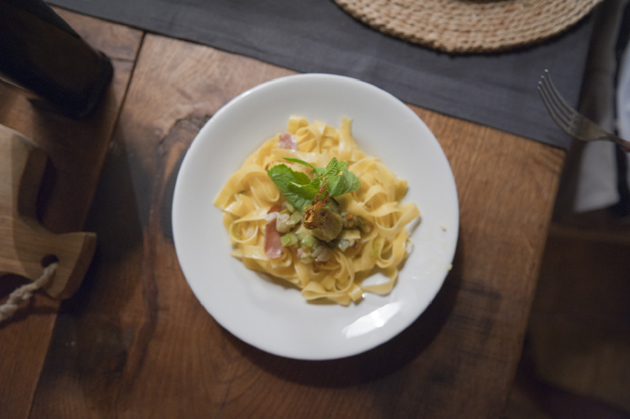
Ingredients for 4 persons
400g fresh hand-made linguini
2 round zucchini
20 squash flowers
4 slices of Parma ham (aged for 24 months)
olive oil
salt
pepper
fresh mint
Slice the zucchini coarsely and braise it in a large skillet with extra virgin olive oil, a lot of mint leaves, part of the ham and the squash flowers, cleaned and private of the base and the stalk. Meanwhile, boil water and cook the pasta for few minutes. Stir-fry the pasta with the dressing, add pepper and sprinkle with freshly grated Parmesan. Add on top of each plate a squash flower filled with ham and baked in the oven for 2 minutes in 200 degrees. Serve with fresh mint leaves and a drop of oil.
